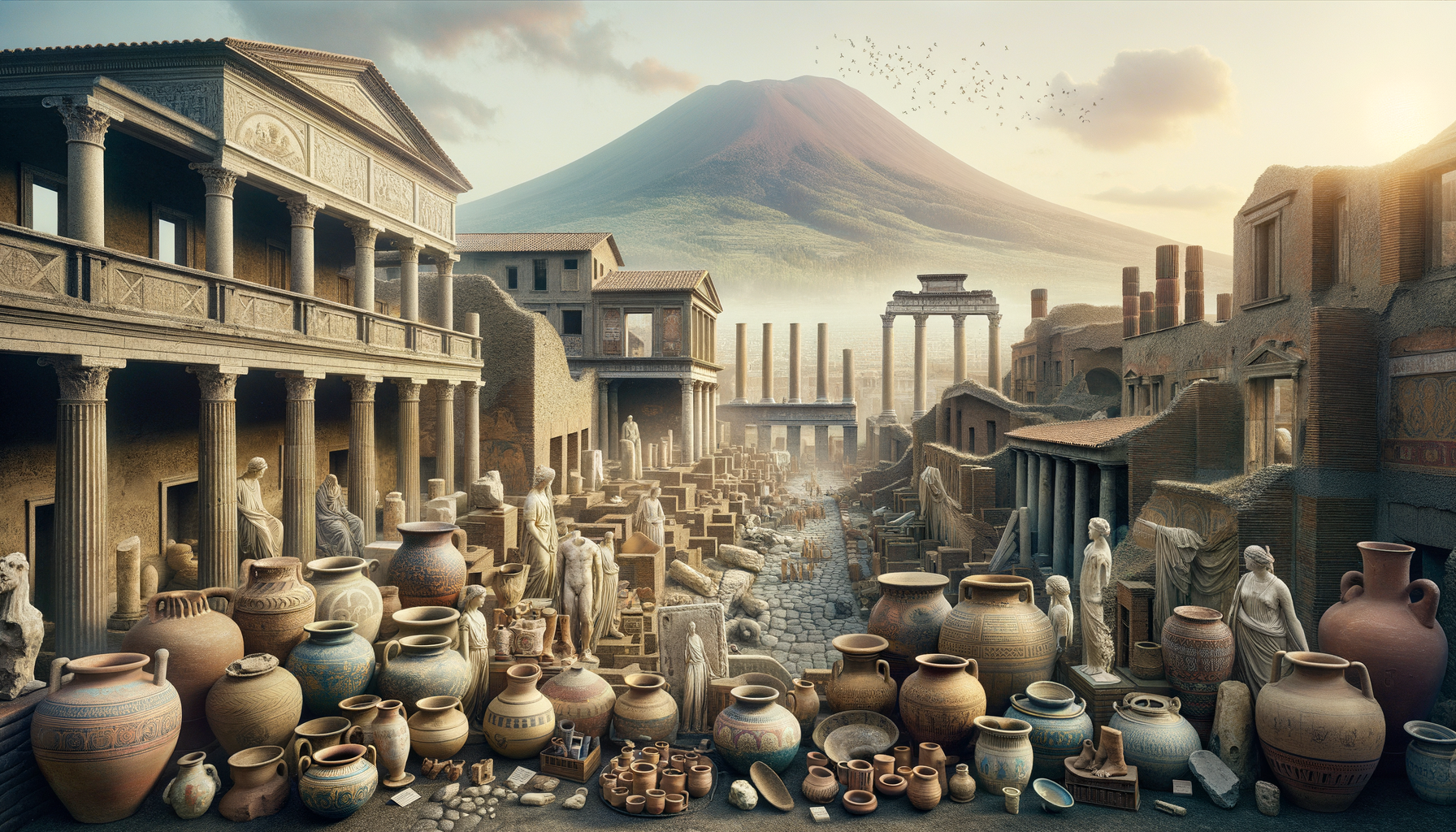The Eruption of Mount Vesuvius: A Catastrophe Frozen in Time
In 79 AD, the bustling city of Pompeii met an untimely end when Mount Vesuvius erupted with catastrophic force. This natural disaster buried the city under a thick carpet of volcanic ash and pumice, preserving it for centuries. The eruption’s suddenness caught the inhabitants off guard, and the city was left eerily intact, offering a poignant snapshot of Roman life. The ash acted as a time capsule, freezing buildings, artifacts, and even the unfortunate victims in their final moments.
The eruption not only devastated Pompeii but also affected nearby cities such as Herculaneum and Stabiae. The scale of destruction was immense, and the impact on Roman society was profound. The event has been meticulously documented by Pliny the Younger, who provided a detailed account of the eruption and its aftermath. His letters remain a vital historical source, offering insights into the magnitude of the disaster.
Today, the ruins of Pompeii stand as a testament to the power of nature and the fragility of human life. The preserved city offers a unique opportunity to study ancient Roman civilization, providing archaeologists and historians with invaluable insights into urban planning, architecture, and daily life.
Archaeological Discoveries: Unveiling the Past
The excavation of Pompeii began in the 18th century and has continued to this day, revealing a treasure trove of artifacts and structures. These discoveries have significantly enhanced our understanding of Roman culture and society. From intricate mosaics to well-preserved frescoes, the art and architecture of Pompeii offer a glimpse into the aesthetic sensibilities of the time.
One of the most remarkable aspects of Pompeii is the preservation of its buildings. The city’s layout, complete with streets, homes, public baths, and temples, provides a comprehensive view of Roman urban life. The Forum, the heart of the city, was a bustling center of commerce and politics, and its remains continue to captivate visitors.
Among the most poignant discoveries are the plaster casts of the victims, created by filling voids in the ash with plaster. These casts capture the final moments of the inhabitants, offering a haunting reminder of the tragedy that befell Pompeii. The city remains a rich source of historical and cultural knowledge, with ongoing excavations promising further revelations.
Daily Life in Ancient Pompeii: A Glimpse into the Past
The ruins of Pompeii provide a vivid portrayal of daily life in an ancient Roman city. The city’s layout, with its grid-like streets and well-planned infrastructure, reflects the sophistication of Roman urban planning. Homes varied in size and opulence, with some featuring elaborate courtyards and gardens, while others were modest dwellings.
Commerce was a vital aspect of life in Pompeii, with numerous shops and markets catering to the needs of its inhabitants. The city was a hub of trade, with goods from across the Roman Empire available for purchase. The presence of bakeries, taverns, and workshops highlights the city’s vibrant economy and the diverse occupations of its residents.
Social life in Pompeii was centered around public spaces such as the Forum and the amphitheater. These venues hosted a variety of events, from political gatherings to gladiatorial games, reflecting the cultural and social dynamics of Roman society. Religion also played a crucial role, with numerous temples and shrines dedicated to various deities scattered throughout the city.
The Art and Architecture of Pompeii: A Testament to Roman Ingenuity
Pompeii’s art and architecture are a testament to the ingenuity and creativity of Roman civilization. The city is renowned for its stunning frescoes, which adorned the walls of homes and public buildings. These vibrant paintings depict scenes from mythology, daily life, and nature, showcasing the artistic talents of the time.
Architecturally, Pompeii was a marvel of Roman engineering. The city’s buildings were constructed using advanced techniques, with an emphasis on durability and functionality. The use of arches, vaults, and domes is evident in the design of public structures such as the baths and the amphitheater, highlighting the Romans’ mastery of architectural innovation.
Pompeii’s art and architecture continue to inspire and captivate, offering a window into the aesthetic and cultural values of ancient Rome. The city’s preservation allows us to appreciate the sophistication and creativity of a civilization that has left an indelible mark on history.
Preservation and Conservation: Challenges and Opportunities
The preservation of Pompeii is a complex and ongoing challenge, requiring meticulous conservation efforts to protect the city’s fragile remains. Environmental factors such as weathering, erosion, and vegetation pose significant threats to the site’s integrity, necessitating continuous monitoring and maintenance.
Efforts to preserve Pompeii have been bolstered by international cooperation and funding, with various organizations contributing to the conservation of this invaluable heritage site. Innovative techniques and technologies are being employed to stabilize structures, restore artworks, and prevent further deterioration.
The preservation of Pompeii is not only about safeguarding the past but also about ensuring that future generations can experience and learn from this extraordinary historical site. The challenges are immense, but the opportunities for education and cultural enrichment are equally significant, making the efforts to protect Pompeii a worthy endeavor.








